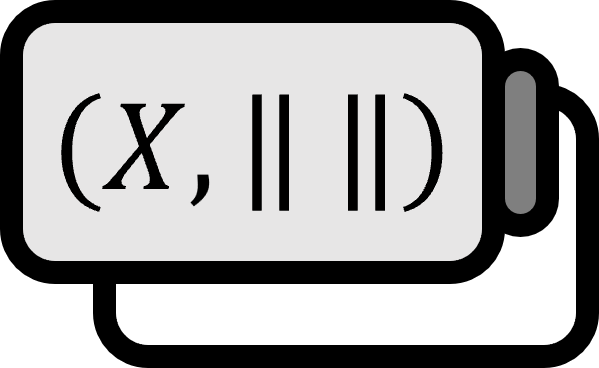Compact Operator Equivalence Conditions
Theorem1
Let $X$ and $Y$ be normed spaces. Let $T : X \to Y$ be a linear operator. Then the following two propositions are equivalent.
- $T$ is a compact operator.
- $T$ maps “every bounded sequence in $X$” to “a sequence in $Y$ that has a convergent subsequence”.
Proof
$1. \Longrightarrow 2.$
Assume $T : X \to Y$ is compact.
Let $\left\{ x_{n} \right\}$ be a bounded sequence. By the definition of a compact operator, $\overline{\left\{ Tx_{n} \right\}}$ is compact, and because compactness in a metric space is equivalent to sequence compactness, $\left\{ Tx_{n} \right\}$ has a convergent subsequence.
A metric space $X$ is sequentially compact if every sequence $\left\{ x_{n} \right\}$ in $X$ has a subsequence $\left\{ x_{n_{k}} \right\}$ that converges to a point in $X$.
$2. \Longrightarrow 1.$
Assume every bounded sequence $\left\{ x_{n} \right\}$ has a subsequence $\left\{ x_{n_{k}} \right\}$ such that $\left\{ Tx_{n_{k}} \right\}$ converges in $Y$.
Consider any bounded subset $B \subset X$ and any sequence $\left\{ y_{n} \right\}$ from $T(B)$. Then, since $B$ is bounded, there exists a $x_{n} \in B$ such that $\left\{ x_{n} \right\}$ is bounded. Therefore, by assumption, $\left\{ Tx_{n} \right\}$ has a convergent subsequence. Since $\left\{ y_{n} \right\} = \left\{ Tx_{n} \right\}$ was any sequence from $T(B)$, every sequence from $T(B)$ has a convergent subsequence. This means that $T(B)$ is sequentially compact (= compact). But since initially $B$ was any bounded set, we obtain the result that $T$ maps any bounded set $B$ to a pre-compact set. Therefore, $T$ is a compact operator.
■
Corollary
The sum $T_{1} + T_{2}$ of two compact linear operators $T_{1}$ and $T_{2}$ is a compact operator. Moreover, for any constant $\alpha$, $\alpha T_{1}$ is a compact operator.
Therefore, the set of compact linear operators from two normed spaces $X$ to $Y$ forms a vector space.
Erwin Kreyszig, Introductory Functional Analysis with Applications (1978), p ↩︎
